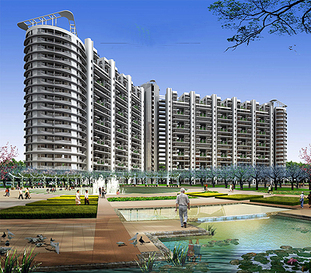 Indian Real Estate Market
Indian Real Estate Market 2012 was a good year for the Indian real estate market. Residential property prices in India had a dream run and went up by 30 to over 60 percent in the national capital region (NCR) of Delhi. Experts feel that 2012 will also witness growth in property markets but prices will not rise as steeply as in 2011.
In the suburbs, prices almost doubled during 2010. Gurgaon, Noida, Mayur Vihar, Patparganj, Dwarka, Rohini, Paschim Vihar, Vaishali, Indirapuram and areas as far-flung as Ghaziabad witnessed unprecedented surge in property prices. In Gurgaon, a three-bedroom flat on 1600 sq feet was available for Rs 1.2 Crore to 2 Crore in early 2012. Now, prices have gone up to Rs 1.5 Crore to 3 Crore. In Noida, a similar flat was available for Rs 70 to 80 lakh in January 2011. Today, the same flat costs anywhere between Rs 90 Lakh to 1.2 Crore.
In fact, the pace of price rise in 2012 was so steep that property dealers found it difficult to keep themselves abreast of the latest prices in their micro markets. A dealer said that they show a property to a buyer only if he is ready to buy the property within a fortnight. If he sees the property, takes the price rates and comes back after a month to do the deal, the deal can't be done because prices have gone up.
Such escalation in prices happened not only in the national capital region of Delhi. In most cities in India, the scenario was more or less the same, though the price rise in Delhi was the steepest. According to a report in some of the micro-markets within Bangalore, Chennai and Pune, residential property prices went up by almost 50 per cent. Mumbai, however, did not witness very sharp rise in prices during 2012. Prices in the main city areas like Worly, Cuffe Parade and Malabar Hills saw some correction. In suburbs like Santacruz, Andheri and Bandra prices firmed up by 5 to 10 per cent.
All major markets - metros and Class A cities - across India are witnessing extremely high rates and a high degree of suburbanization. Following a lag in infrastructure development, currently most suburban areas are witnessing greater infusion of capital for upgrading infrastructure. Better road connectivity, public transport networks and dedicated business promotion zones are being set up by the respective state government. This has increased the attractiveness of living in such suburbs. Social infrastructure, in terms of schools, medical facilities, colleges, etc., is also fast catching up to cater to the now increasingly profitable suburban audiences. A similar growth trend is visible now in tier II cities like Ludhiana, Chandigarh, Jaipur, Hyderabad, Kochi, etc. Business led demand for commercial office space has fuelled demand for residential and retail properties
In the suburbs, prices almost doubled during 2010. Gurgaon, Noida, Mayur Vihar, Patparganj, Dwarka, Rohini, Paschim Vihar, Vaishali, Indirapuram and areas as far-flung as Ghaziabad witnessed unprecedented surge in property prices. In Gurgaon, a three-bedroom flat on 1600 sq feet was available for Rs 1.2 Crore to 2 Crore in early 2012. Now, prices have gone up to Rs 1.5 Crore to 3 Crore. In Noida, a similar flat was available for Rs 70 to 80 lakh in January 2011. Today, the same flat costs anywhere between Rs 90 Lakh to 1.2 Crore.
In fact, the pace of price rise in 2012 was so steep that property dealers found it difficult to keep themselves abreast of the latest prices in their micro markets. A dealer said that they show a property to a buyer only if he is ready to buy the property within a fortnight. If he sees the property, takes the price rates and comes back after a month to do the deal, the deal can't be done because prices have gone up.
Such escalation in prices happened not only in the national capital region of Delhi. In most cities in India, the scenario was more or less the same, though the price rise in Delhi was the steepest. According to a report in some of the micro-markets within Bangalore, Chennai and Pune, residential property prices went up by almost 50 per cent. Mumbai, however, did not witness very sharp rise in prices during 2012. Prices in the main city areas like Worly, Cuffe Parade and Malabar Hills saw some correction. In suburbs like Santacruz, Andheri and Bandra prices firmed up by 5 to 10 per cent.
All major markets - metros and Class A cities - across India are witnessing extremely high rates and a high degree of suburbanization. Following a lag in infrastructure development, currently most suburban areas are witnessing greater infusion of capital for upgrading infrastructure. Better road connectivity, public transport networks and dedicated business promotion zones are being set up by the respective state government. This has increased the attractiveness of living in such suburbs. Social infrastructure, in terms of schools, medical facilities, colleges, etc., is also fast catching up to cater to the now increasingly profitable suburban audiences. A similar growth trend is visible now in tier II cities like Ludhiana, Chandigarh, Jaipur, Hyderabad, Kochi, etc. Business led demand for commercial office space has fuelled demand for residential and retail properties
 RSS Feed
RSS Feed